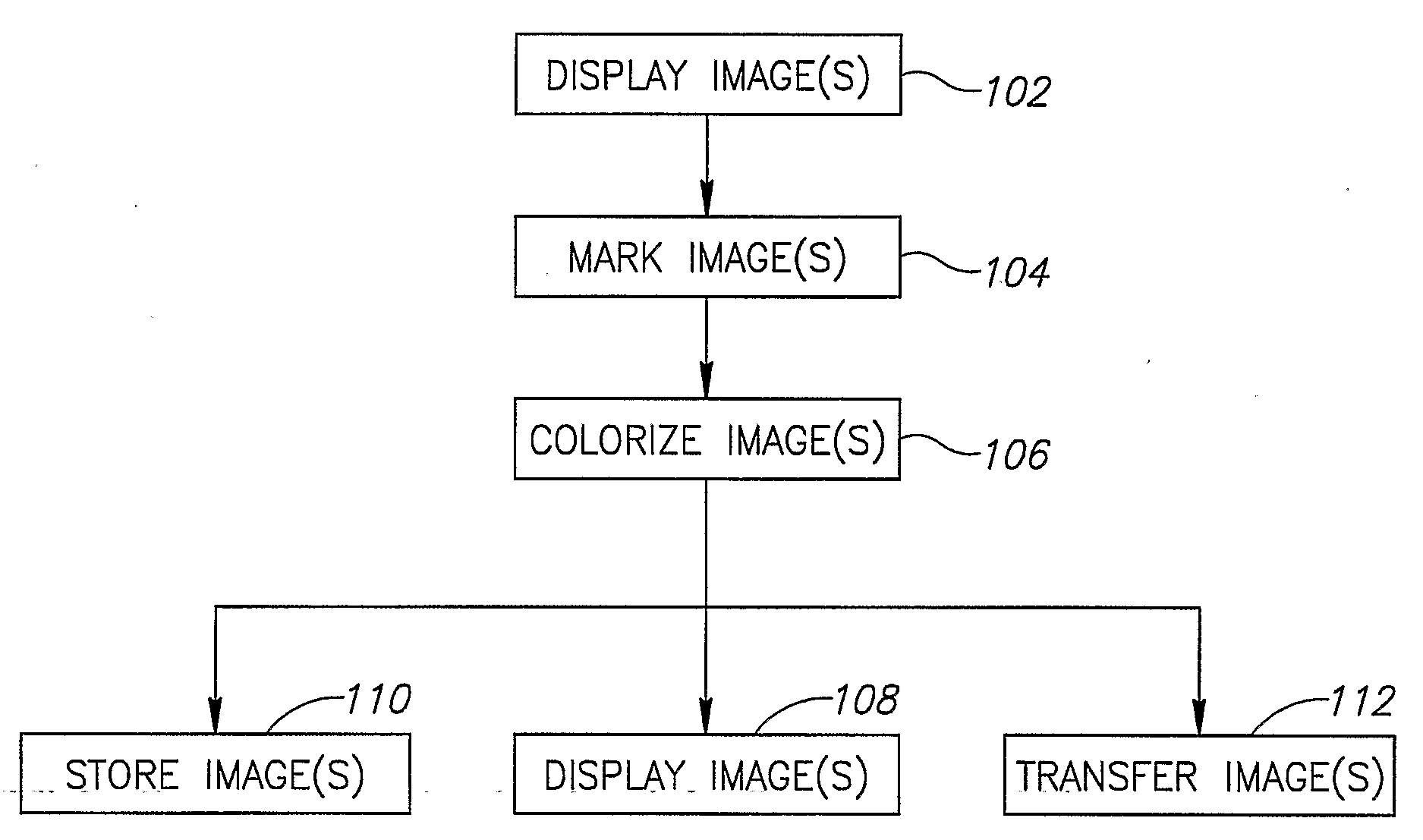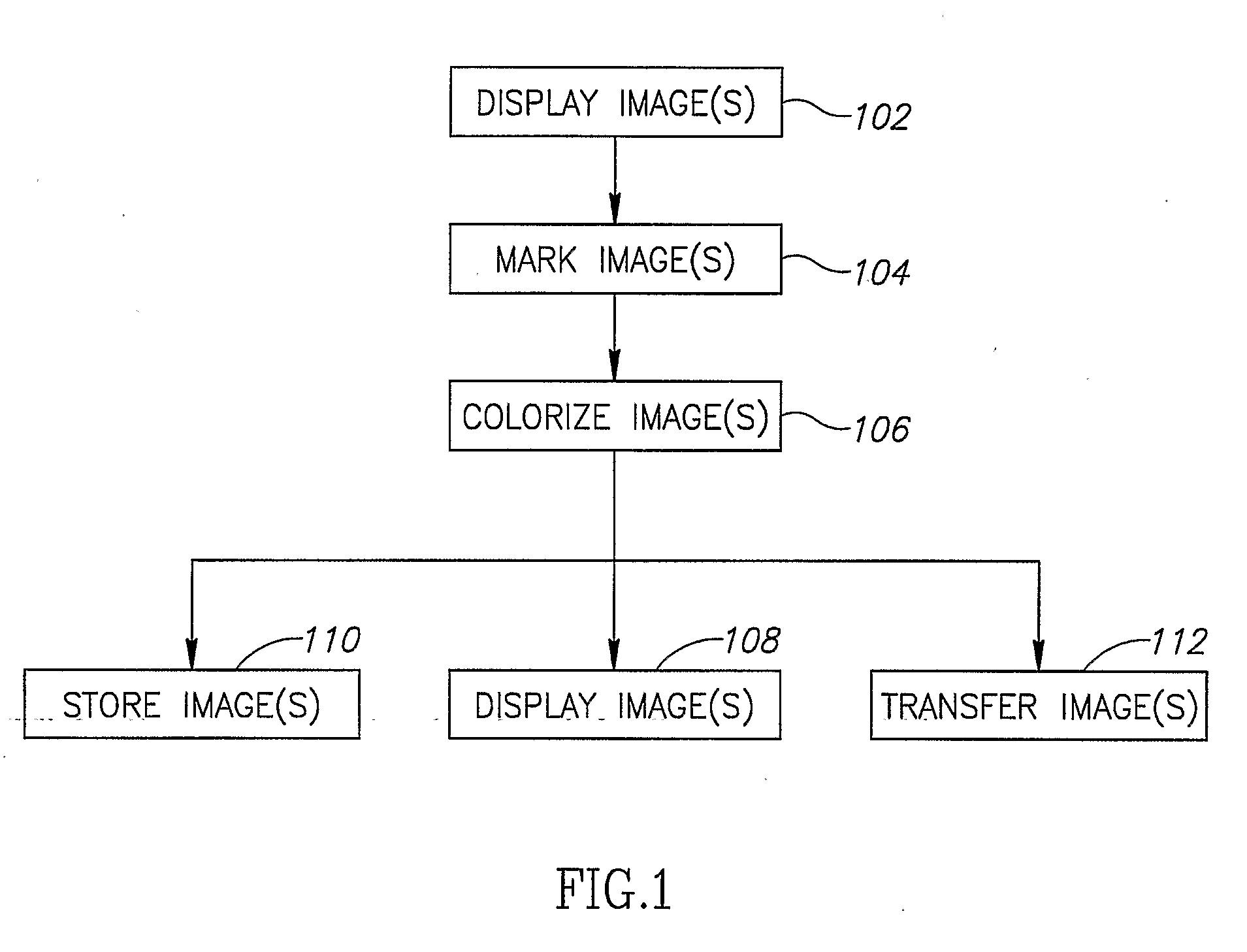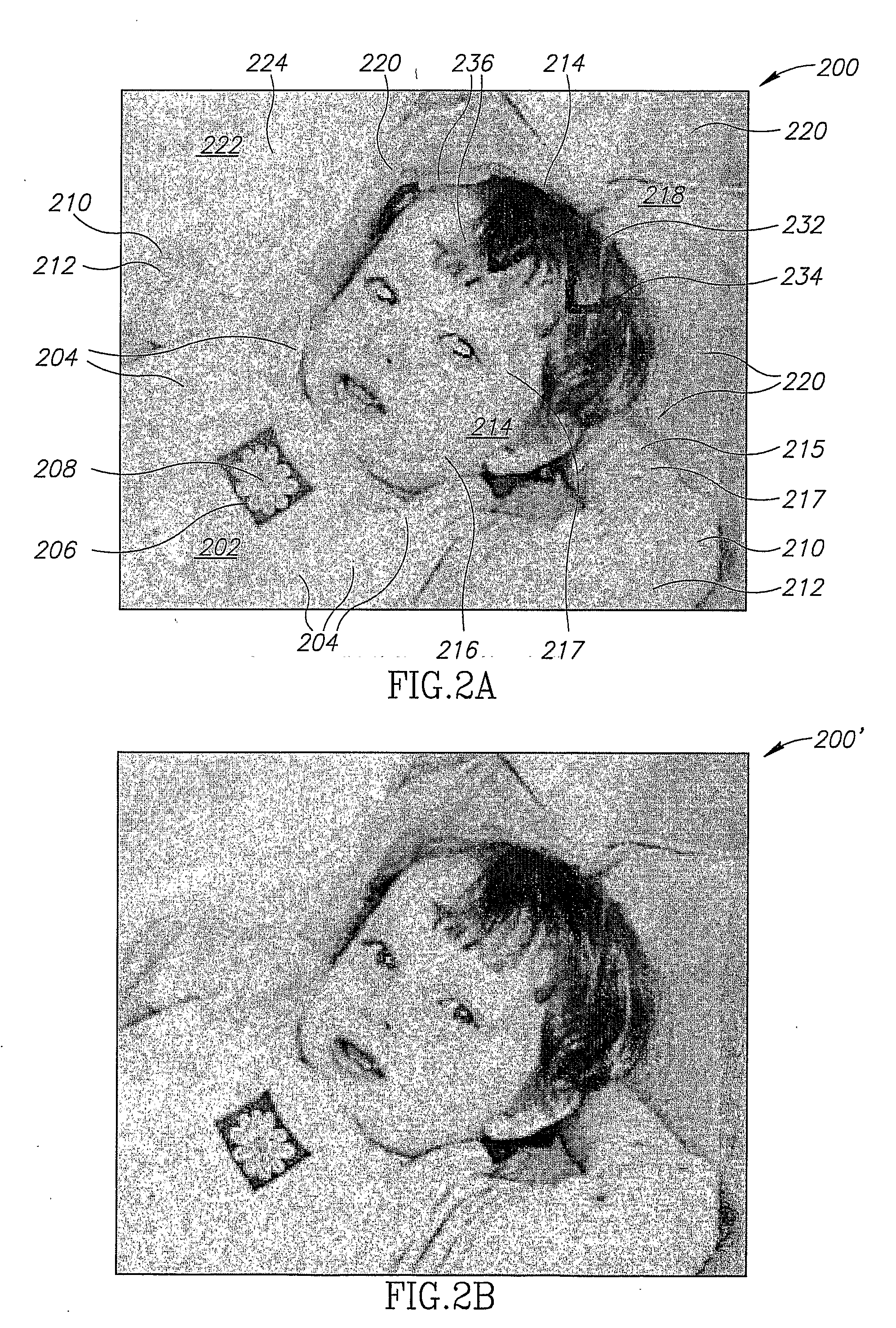Colorization method and apparatus
a colorization and colorization technology, applied in the field of colorization methods and apparatuses, can solve the problems of inability to perform tasks, and inability to accurately identify fuzzy or complex region boundaries of automatic segmentation algorithms
- Summary
- Abstract
- Description
- Claims
- Application Information
AI Technical Summary
Benefits of technology
Problems solved by technology
Method used
Image
Examples
Embodiment Construction
[0091]FIG. 1 is a flow chart 100 illustrating a method of colorization of an image, in accordance with an embodiment of the invention.
[0092]First, monochrome images are optionally displayed (102) on a display. Next places on the image are marked (104) with various colors. These markings are sometimes referred to as scribbles herein (even when they are only dots of color).
[0093]FIG. 2A illustrates an image 200 of a child lying on some pillows in which various places have been marked. For example, a child's shirt 202 has been marked with a yellow set of scribbles 204, the center of a daisy 206 has been marked with a red scribble 208, sleeves 210 of the shirt have been marked with a green scribble 212, face portions 214 and arm portions 215 have been marked with flesh color scribbles 216 and 217, having different hues, some hair 232 portions have been marked with dark brown scribbles 234 and others have been marked with lighter brown scribbles 236 to indicate highlights. Pillows 218 ha...
PUM
 Login to View More
Login to View More Abstract
Description
Claims
Application Information
 Login to View More
Login to View More - R&D
- Intellectual Property
- Life Sciences
- Materials
- Tech Scout
- Unparalleled Data Quality
- Higher Quality Content
- 60% Fewer Hallucinations
Browse by: Latest US Patents, China's latest patents, Technical Efficacy Thesaurus, Application Domain, Technology Topic, Popular Technical Reports.
© 2025 PatSnap. All rights reserved.Legal|Privacy policy|Modern Slavery Act Transparency Statement|Sitemap|About US| Contact US: help@patsnap.com



